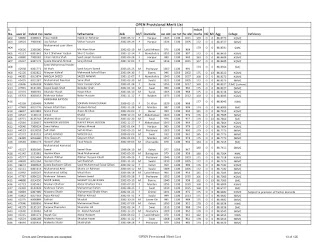CHAPTER NO.9 CHEMICAL KINETICS
1.
|
Activated
complex is a substance which is
a.
Stable
b.
Unstable
c.
Can be isolated
d.
Can exists as product
|
B
|
2.
|
A
reaction is first order with respect to A and second order with respect B,
the rate equation is
a.
Rate = k [A] [B]2
b.
Rate = k [A]2 [B]
c.
Rate = k [A] [B]
d.
Rate = k [A]
|
A
|
3.
|
For
a reaction,, doubling the concentration of reactant quadruples the rate, the
reaction is
a.
First order
b.
Second order
c.
Third order
d.
Zero order
|
B
|
4.
|
With
the increase in temperature the rate of reaction increases due to
a.
Increase in collision
b.
Decrease in activation energy
c.
Increase kinetic energy of molecules
d.
All of these
|
D
|
5.
|
For
a reaction,, doubling the concentration of reactant ,doubles the rate, the
reaction is
a.
First order
b.
Second order
c.
Third order
d.
Zero order
|
A
|
6.
|
For
a reaction,, doubling the concentration of reactant ,does no change the rate,
the reaction is
a.
First order
b.
Second order
c.
Third order
d.
Zero order
|
D
|
7.
|
Rate
= k [CO] [NO2] is called
a.
Rate expression
b.
Rate equation
c.
Rate law
d.
All of these
|
D
|
8.
|
Order
of reaction cannot be
a.
First order
b.
Zero order
c.
Fractional order
d.
Non of these
|
D
|
9.
|
The
rate of reaction can be effected by
a.
Concentration of reactants
b.
Nature of reactant
c.
Temperature of reaction
d.
All of these
|
D
|
10.
|
Activated
complex has
a.
Low potential energy
b.
Very stable substance
c.
Very unstable substance
d.
Can be isolated
|
C
|
11.
|
A
catalyst
a.
Increase rate of reaction
b.
Decrease rate of reaction
c.
Increase or decrease rate of reaction
d.
No effect on rate of expression
|
C
|
12.
|
Which
one of the following is not true for activated complex
a.
extremely unstable
b.
Short life spam
c.
High potential energy
d.
Non of these
|
D
|
13.
|
Collision
theory of reaction rate states that
a.
Collision must occur
b.
Collision must have activation energy
c.
Collision occurs in proper orientation
d.
All of these
|
D
|
14.
|
The
number of colloiding molecules of different gas is in order of
a.
1030
b.
1010
c.
1032
d.
1028
|
C
|
15.
|
Which
one of the following property if not about transition state of reaction, they
have
a.
Molecular weight
b.
Definite enthalpy
c.
Fixed structure
d.
Ability of rotation and vibration
|
C
|
16.
|
For
decomposition of hydrogen peroxide, the catalyst used as
a.
Ni
b.
MnO2
c.
NO2
d.
Fe2O3
|
B
|
17.
|
The
catalyst uses in the production of sulphuric acid is
a.
Ni
b.
MnO2
c.
NO2
d.
Fe2O3
|
C
|
18.
|
The
catalyst uses for conversion ethane to ethane
a.
Ni
b.
MnO2
c.
NO2
d.
Fe2O3
|
A
|
19.
|
Ptyalin
helps in conversion of
a.
Starch into sugar
b.
Starch into lipids
c.
Glycogen into glucose
d.
Decomposition of lipids
|
A
|
20.
|
The
change in concentration of a given substance per unit time is called
a.
Speed of reaction
b.
Rate of reaction
c.
Reaction speed
d.
Reaction conversion details
|
B
|
21.
|
Order
is …… determined parameter
a.
Imaginary
b.
Theoretically
c.
Experimentally
d.
Non of these
|
C
|
22.
|
The
energy of transition state is
a.
Greater than energy of reactants
b.
Greater than energy of product
c.
Greater than energy of product and reactants
d.
Less than energy of reactant and product
|
C
|
23.
|
Which
one of the following is wrong about catalyst
a.
Increase the rate of reaction
b.
Consumed in reaction
c.
Recovered chemically at the end
d.
Very small amount of catalyst are uses
|
B
|
24.
|
The
decomposition reaction rate of gaseous us di-nitrogen pentoxide is
a.
9.4 x 105 mol/dm3-hour
b.
9.4 x 105 mol/dm3-min
c.
5.4 x 105 mol/dm3-hour
d.
1.4 x 105 mol/dm3-hour
|
A
|
25.
|
The
catalyst used for the reaction od decomposition of KClO3 is→
a.
Ni
b.
MnO2
c.
NO2
d.
Fe2O3
|
B
|








Comments
Post a Comment